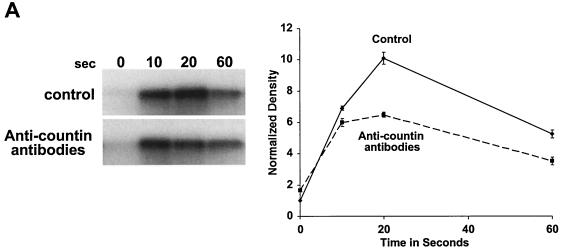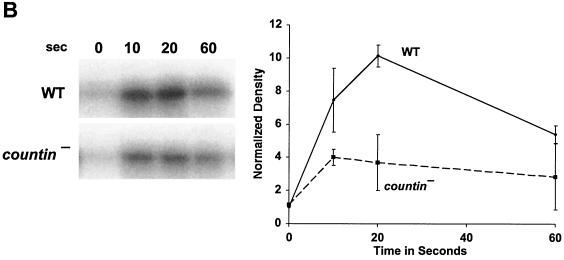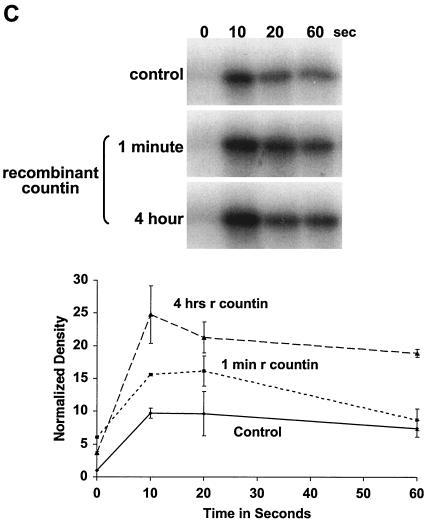FIG. 1.
Countin potentiates cAMP-stimulated Akt/PKB activity. (A) Anti-countin antibodies decrease Akt/PKB activity. Ax4 cells were starved in the absence (control) or in the presence (4 h) of anti-countin antibodies. After 6 h of starvation, the cells were collected, stimulated with cAMP, and lysed at the indicated times after stimulation. Akt/PKB was immunoprecipitated from the NP-40-soluble fraction with anti-Akt/PKB antibodies, and Akt/PKB kinase activity was assayed by using [γ-32P]ATP and histone H2B as substrates. The samples were then subjected to SDS-PAGE, and the gel was exposed to X-ray film. The heavy band is phosphorylated histone H2B. The autoradiograms were scanned, and the integrated density in each band was calculated. All of the densities, including the time zero experimental value, were normalized to the time zero control value, which was set to 1. The graph shows the means ± standard errors of the means from three separate experiments. The difference at 20 s was significant (P < 0.01; t test). (B) cAMP-stimulated Akt/PKB activity is decreased in countin− cells. Akt/PKB activities were examined in 6-h-starved countin− cells and parental Ax4 cells (WT). Cells were stimulated with cAMP and processed as described for panel A. The graph shows data normalized as for panel A from three separate experiments. The difference at 20 s was significant (P < 0.05; t test). (C) Recombinant countin increases Akt/PKB activity. Ax4 cells were starved and exposed to 200 ng of recombinant countin per ml for 4 h, 1 min, or never (control) prior to harvesting at 6 h. Cells were stimulated with cAMP and assayed for Akt/PKB activity as described for panel A. The graph shows data normalized as for panel A from four separate experiments. The differences between control and either countin treatment at 10 s were significant (P < 0.01; t tests).



